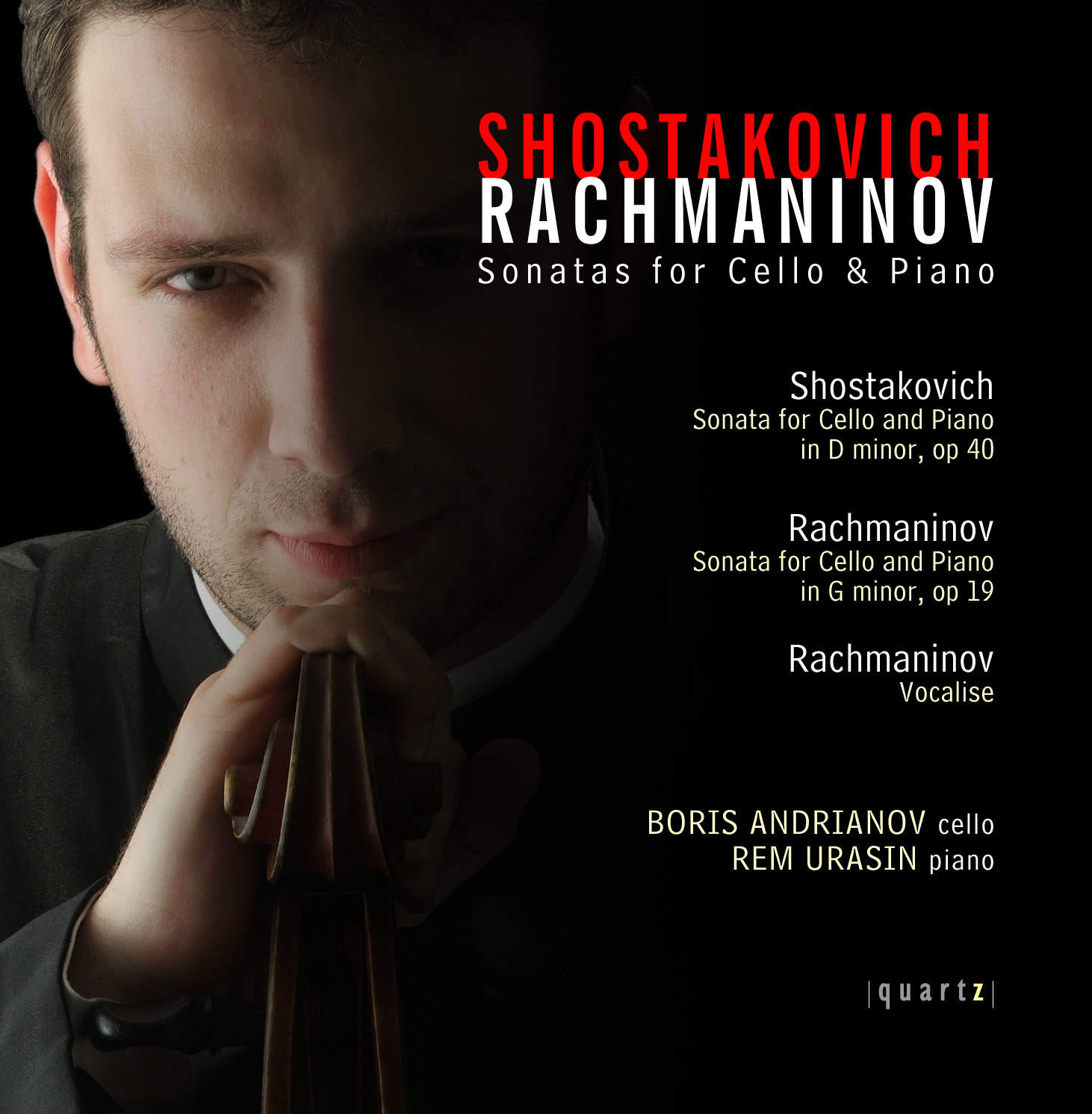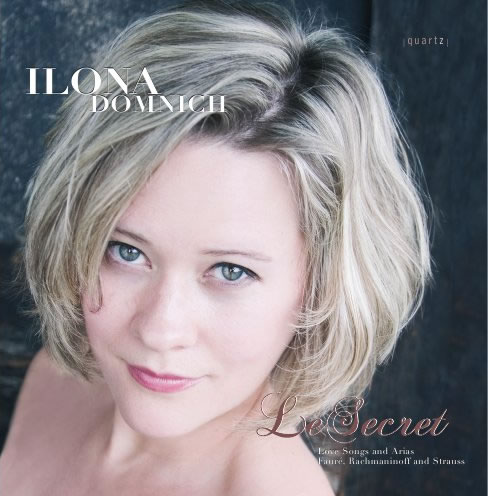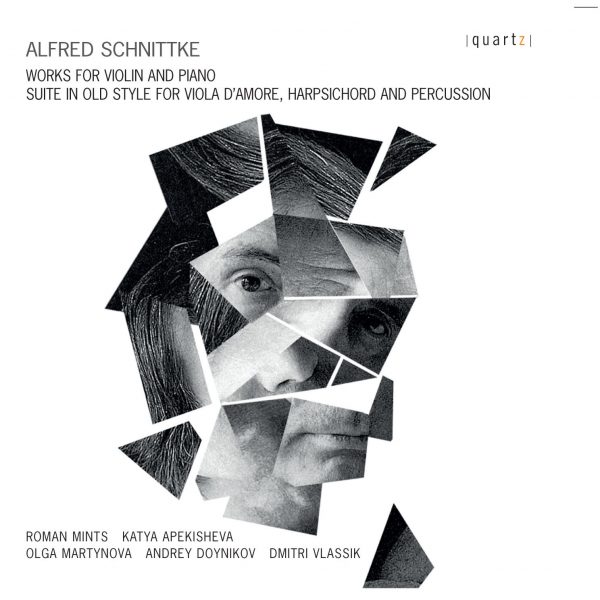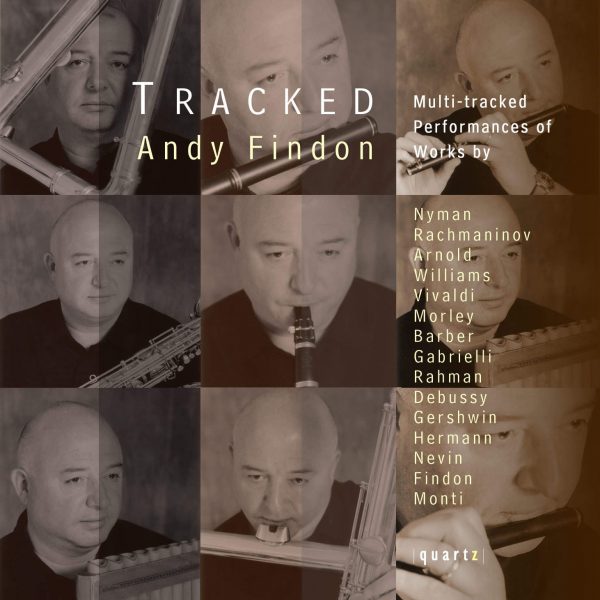Shostakovich & Rachmaninov Cello Sonatas
Price range: £4.99 through £11.99
Boris Andrianov
Cello
Rem Urasin
Piano
Shostakovich
Sonata for Cello and Piano in D minor, op 40
Rachmaninov
Sonata for Cello and Piano in G minor, op 19
Rachmaninov
Vocalise
The debut album by two of the most critically acclaimed young Russian musicians working today.
“This is one of those delightful surprises that one can instantly love. It also underscores yet again the fact that fame is no prerequisite for (or guarantee of) top-notch performances. Andrianov and Urasin are as one in these sonatas, playing with immense skill, delicacy of touch and, especially in the Rachmaninov, plenty of heart.” —EDITOR’S CHOICE, Gramophone Magazine
About This Recording
DMITRI SHOSTAKOVICH
Sonata for Cello & Piano in D minor, op 40
I Allegro non troppo
II Allegro
III Largo
IV Allegro
Shostakovich completed his Cello Sonata Op 40 in 1934 at a time of great personal and professional turbulence both of which centred around the recent production of his opera Lady Macbeth of Mtsensk. Not only had he temporarily left his wife for a young student who had been involved in the opera but the work had also incurred the wrath of Stalin who denounced it as “bourgeois”.
Shostakovich would spend the rest of his career negotiating a difficult path between true self-expression and avoiding the ire of the Soviet authorities. It is away from the large scale works such as the symphonies and operas, that Shostakovich’s most personal statements can often be found and the Cello Sonata is one such example.
The first movement, Allegro non troppo, is, on the face of it, a traditional sonata form structure. It begins confidently with a broad, sweeping theme in the cello and flowing arpeggios in the piano all leading to an intense climax. However, there is no true recapitulation of the main theme and the movement fades away to an eerie ending which leaves matters emotionally unresolved.
The second movement, Allegro, is a typical Shostakovich moto perpetuo scherzo. Taking the traditional scherzo as its starting point, he subverts the form using distant and unexpected key changes, wide thematic and textural contrasts to produce a movement that is delicate, grotesque and bitterly ironical while virtuosic throughout. The third movement, Largo, develops the emotional landscape of the closing bars of the first movement. A lyrical cello line is underpinned by dissonances which are prevented from resolving and the whole movement presages many of the bleaker slow movements that appear in his later, large-scale works.
The darkness of the earlier movements appears to be dispelled with the fourth movement, Allegro, but we soon realise that the renewed energy is imbued with a savage and sardonic wit, the whole structure being abruptly torn off in a brilliant and virtuosic ending.
SERGEI RACHMANINOV
Sonata for Cello & Piano in G minor, op 19
I Lento – Allegro moderato
II Allegro scherzando
III Andante
IV Allegro mosso
Rachmaninov wrote very little chamber music unless, of course, you count the numerous works he wrote for solo piano. The Cello Sonata Op 19 of 1900 is perhaps his most important chamber work and was completed after a three-year fallow period brought about by depression following the disastrous premiere (under the baton of Glazunov) of his First Symphony. Rachmaninov gave credit to hypnotherapy for dragging him out of his depression and it is quite possible that the Sonata was conceived as an expression of gratitude to his hypnotherapist, himself an amateur cellist.
The first movement begins with a substantial Lento introduction followed by a sonata-form Allegro moderato. Although, structured around a traditional form, the sound world evoked here is clearly advanced from that of the ill-starred First Symphony of three years earlier and the lush harmonies and textures of the Second and Third Piano Concertos can be heard here in development. Critics have also pointed out that Rachmaninov’s impending marriage to his cousin, Natalia Satina, may have contributed to the overtly romantic, even nostalgic, sentiment in this movement.
The second movement, Allegro scherzando, is much more volatile; wild, syncopated rhythms over galloping pedal points alternate with beautiful, arching cello melodies. A piano cadenza brings the material back to the energy of the opening and the movement ends with both instruments fizzling out in true scherzando style into to the distance.
In the lyrical third movement, Andante, both instruments take equal roles, weaving increasingly intense lines which lead to an impassioned climax. Just as the momentum appears to recede, the movement gathers energy once more reaching a second peak of intensity before ending with a return to the opening lyricism. The finale, Allegro mosso, is, again, a traditional sonata-form movement and ends this unashamedly romantic work in an extrovert, affirmative mood.
SERGEI RACHMANINOV
Vocalise
Rachmaninov’s Vocalise was originally the last of a set of 14 songs for voice and piano written in 1912. It is a Song Without Words in the truest sense of the phrase as the singer performs a wordless, slightly melancholy melody which unfolds over rich and gentle harmonies. It is one of Rachmaninov’s most enduring short works and it is a measure of the composer’s ability to produce utterly captivating melodies that it has been transcribed for virtually every solo instrument and in a huge range of instrumentations/orchestrations.
Track Listing
-
Dmitri Shostakovich
- Cello Sonata (i) Allegro non troppo
- Cello Sonata (ii) Allegro
- Cello Sonata (iii) Largo
- Cello Sonata (iv) Allegro Sergei Rachmaninov
- Cello Sonata (i) Lento - Allegro moderato
- Cello Sonata (ii) Allegro scherzando
- Cello Sonata (iii) Andante
- Cello Sonata (iv) Allegro mosso
- Vocalise




